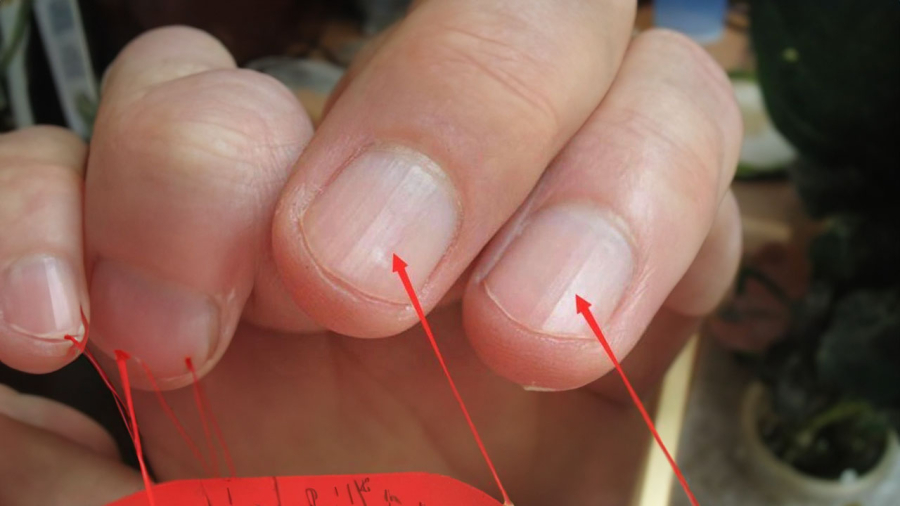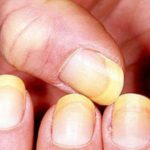Seeing colors
According to Dr. Zainab Laftah, a dermatology consultant at HCA Healthcare UK, nail discoloration such as white, yellow, green, or black can be a sign of a serious medical condition. If the nails are pale, it could indicate iron deficiency anemia and potential heart and kidney problems.
On the other hand, brittle and easily breakable nails can be a sign of iron deficiency.
In this case, you should actively consume foods rich in iron such as meat, spinach, lentils, and sugarcane, as they are easily absorbed sources of iron.

External signs of nail discoloration may indicate serious diseases like heart and kidney problems
If the nails turn yellow, it could indicate thymus infection or lung disease. Blue nails may suggest a lack of oxygen in the blood. If the nails remain blue after iron supplementation and there is no anemia, it could indicate an underlying condition that hinders the body’s ability to pump oxygen-rich blood, which may suggest heart and lung diseases.
When exposed to cold, the nails may turn bluish again, but if they remain blue in warm conditions, it could be a sign of Raynaud’s phenomenon.
White nails with white spots or streaks may be due to underlying causes including allergies, injuries, fungal infections, poisoning, diabetes, heart failure, and liver fibrosis.
Nails with dark discoloration may indicate skin cancer. “If you see black spots or discoloration, talk to a general practitioner or dermatologist immediately,” he advised.
Black nails can be caused by trauma or fungal infections, but in some cases, it may indicate heart disease or malignancy. Malignant tumors cause one or more dark, unevenly pigmented skin patches. In some cases, the dark pigmented skin can grow under the nails.
Red nails can be a sign of heart disease or kidney issues and are also associated with conditions such as psoriasis and lupus. If you notice long-term changes in nail color, consult with a doctor.
Looking at the shape
If your nails become thin, concave in the middle, and high around the edges, forming a spoon-shaped or concave nail, it may be a sign of anemia due to iron deficiency or cardiovascular disease.
On the other hand, if the nails appear clubbed, swollen at the fingertip and even at the base of the nails, which should be slightly concave, it may indicate cardiovascular, respiratory, or gastrointestinal diseases.
Examining the texture
When nails are healthy, they are smooth and strong. However, if the nails are brittle or prone to splitting, it may be a sign of hypothyroidism.
The appearance of small pits on the nails can be a sign of psoriasis. Up to 35% of people with psoriasis will have pitted nails.
Changes in nail texture are also related to deficiencies in vitamins and minerals. Deficiencies in vitamins B12, iron, zinc, or magnesium can cause vertical lines on the nails, while deficiencies in vitamins A and C can make the nails brittle or prone to breaking.
Take a close look at your nails to see if there are any signs.



































